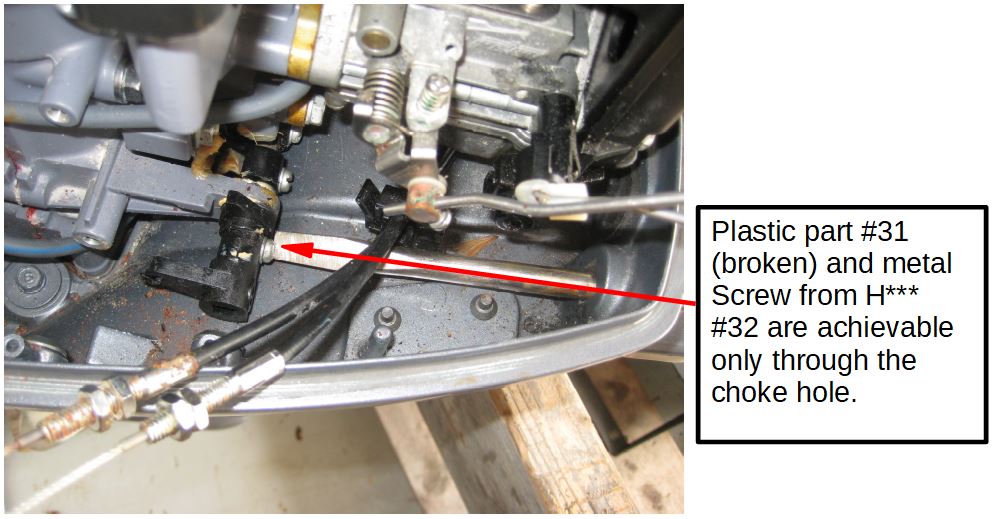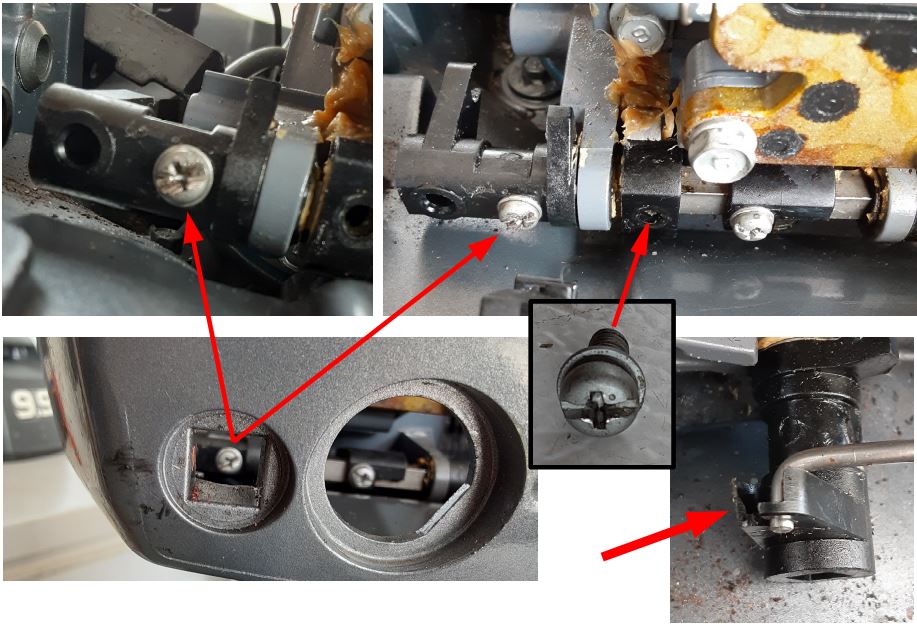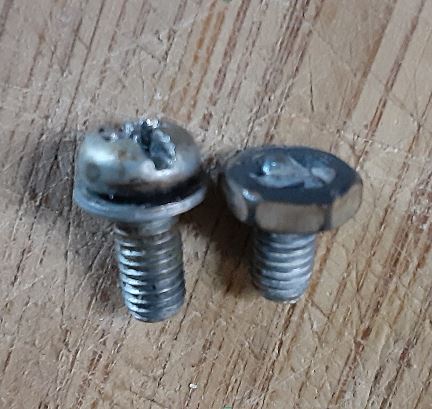Land_Owner
New member
2006 9.9 MSH 682K S 1041179
A metal screw (#32 in picture below), keeps a broken plastic piece (#31) on its plastic shaft (#24), for control of forward, neutral, and reverse. The screw WILL NOT back out - and I HAVE TRIED. A huge screwdriver, well fitted to the slot in the screw head, cannot turn this screw more than a few hundredths of an inch. I held #24 in location while my son torqued on #32 - nothing. He held its location and I TORQUED on #32 - twice. I got 0.02" (+/-) of total rotation.
I can't grab it with any wrench. None of my Phillips screwdrivers are long enough, and if I had one it would not engage the screw any better than the huge Standard screwdriver already used.
I have tried counter rotation (tightening) and nothing. I have Kroil oil that I have not tried. I am at a loss for what to try next...the "assembly" is held in place through holes in the casting. There is no removal to work this out at the vice on the bench.


A metal screw (#32 in picture below), keeps a broken plastic piece (#31) on its plastic shaft (#24), for control of forward, neutral, and reverse. The screw WILL NOT back out - and I HAVE TRIED. A huge screwdriver, well fitted to the slot in the screw head, cannot turn this screw more than a few hundredths of an inch. I held #24 in location while my son torqued on #32 - nothing. He held its location and I TORQUED on #32 - twice. I got 0.02" (+/-) of total rotation.
I can't grab it with any wrench. None of my Phillips screwdrivers are long enough, and if I had one it would not engage the screw any better than the huge Standard screwdriver already used.
I have tried counter rotation (tightening) and nothing. I have Kroil oil that I have not tried. I am at a loss for what to try next...the "assembly" is held in place through holes in the casting. There is no removal to work this out at the vice on the bench.






